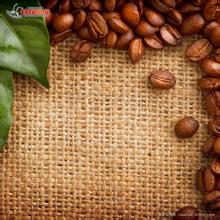Guatemala Inchter Estate Coffee Bean Flavor Description Grind Scale Variety Taste Treatment Introduction
Description of Flavor of Coffee beans in Incht Manor, Guatemala introduction to the method of taste treatment of varieties with grinding scale
Mr. Jesus Aguirre Panama acquired the estate in 1874. He began to grow sugar cane to make brown sugar (locally known as "panela"), while the estate also grew corn, beans and tobacco. He began growing coffee in 1900 and called the area "El Injerto", which took its name from a local fruit. Incht Manor has always been a leader in the quality and innovation of Guatemalan coffee. The current owner of the manor, Arturo Aguirre, is the fourth generation of the family. He studied agricultural management in the famous Earth University.
Guatemalan coffee beans are mostly cultivated in high-altitude volcanic soils belonging to the most advanced Arabica varieties. Due to the long ripening period, the beans are medium and dense (Guatemalan coffee beans are graded not on the basis of particle size, but on the basis of shortcomings), and the bean color is dark turquoise. The unique sour taste of fragrance, mellow, sweetness and freshness is characterized by the aroma and taste of coffee beans hidden in its sour taste. Therefore, coffee beans with this characteristic can be called first-class coffee beans. The Antigua region is a closed valley surrounded by three volcanoes: Agua, Acatenango and Fuego. Antigua is flat and slightly sloping, unlike other coffee producers located in volcanic areas.
Most coffee trees are planted in the hinterland of the valley, but even so, they have reached an altitude of 5000 feet; in addition, some farmers grow coffee on the slopes of volcanoes, nearly 5600 feet above sea level.
The extremely high content of pumice (pumice) in the soil of Antigua (from the active Fuaigo volcano Fuego) keeps the humidity stable at 65% all the year round, which is very different from other volcanic coffee producing areas, where the humidity usually varies greatly between the dry and wet seasons.
Fertile volcanic soil, low humidity, plenty of sunshine and cool nights all make Antigua unique.
The three majestic volcanoes Agua, Acatenango and Fuego surround the Antigua Valley. Every once in a while, Fuego-- one of Guatemala's three active volcanoes adds fresh, mineral-rich ash to the soil of Antigua. The volcanic pumice in the soil can keep the soil moist, greatly making up for the lack of precipitation in Antigua, which is the least rainy of the eight coffee-producing regions in Guatemala.
Like all Guatemalan boutique coffee, Antigua coffee is grown in shade. In Antigua, shade is mainly used to protect coffee trees from frost, which is cold and sometimes frosty from December to February every year. Dense shade and extremely shallow aquifers work together to create a unique micro-climate for the coffee trees living in it.

Important Notice :
前街咖啡 FrontStreet Coffee has moved to new addredd:
FrontStreet Coffee Address: 315,Donghua East Road,GuangZhou
Tel:020 38364473
- Prev

Panama Hartman Estate Coffee Bean Flavor Description Grind Scale Processing Introduction
Hartman Estate Panama Coffee Bean Flavor Description Grind Scale Processing Method Introduction to Producing Areas Today Hartman Estate is a family business founded in 1940 by Latip Hartman (son of Louis). In 1966, Lattie married Denora Sandy of Costa Rica. They had five sons, little latitte, alan, alexander, alice and kelly. each of
- Next

Description of the flavor of Brazilian queen Huang bourbon coffee beans introduction to the method of grinding and calibration
Brazilian Queen Yellow bourbon Coffee beans how to make flavor description of taste grinding scale treatment generally speaking, the price of yellow bourbon is a little too high, but its unique sweetness and thickness are much better than the new world varieties or red bourbon varieties commonly used in Brazil. Especially in the throat rhyme part, you can feel a warm cashew nut throat rhyme. Production area: Shirado products
Related
- Does Rose Summer choose Blue, Green or Red? Detailed explanation of Rose Summer Coffee plots and Classification in Panamanian Jade Manor
- What is the difference between the origin, producing area, processing plant, cooperative and manor of coffee beans?
- How fine does the espresso powder fit? how to grind the espresso?
- Sca coffee roasting degree color card coffee roasting degree 8 roasting color values what do you mean?
- The practice of lattes: how to make lattes at home
- Introduction to Indonesian Fine Coffee beans-- Java Coffee producing area of Indonesian Arabica Coffee
- How much will the flavor of light and medium roasted rose summer be expressed? What baking level is rose summer suitable for?
- Introduction to the characteristics of washing, sun-drying or wet-planing coffee commonly used in Mantenin, Indonesia
- Price characteristics of Arabica Coffee Bean Starbucks introduction to Manning Coffee Bean Taste producing area Variety Manor
- What is the authentic Yega flavor? What are the flavor characteristics of the really excellent Yejasuffi coffee beans?

